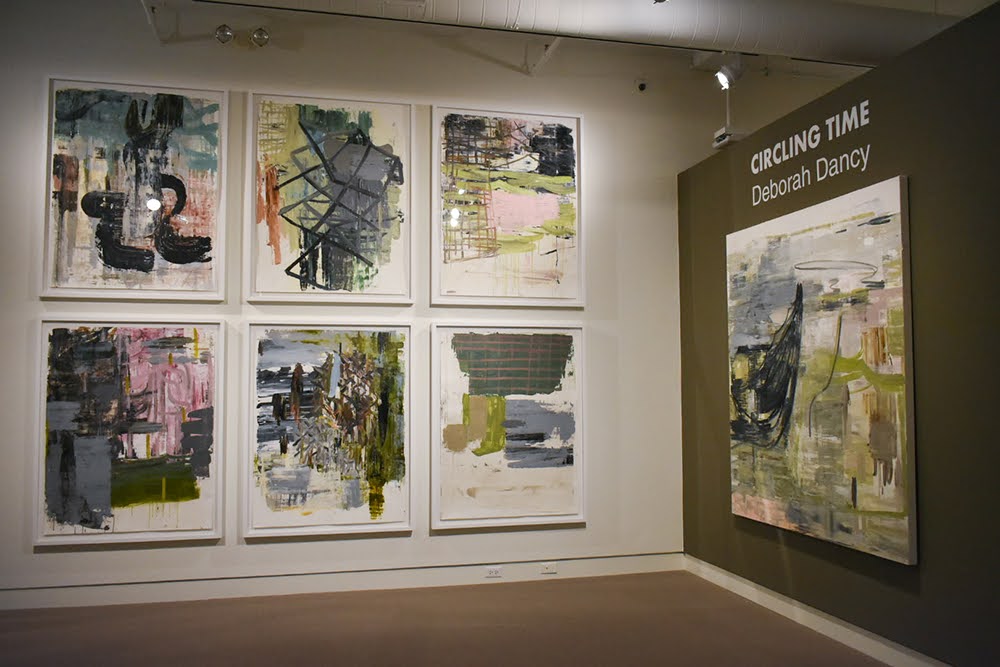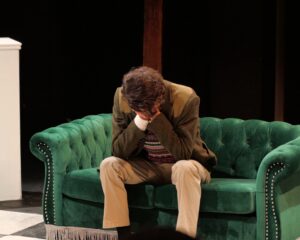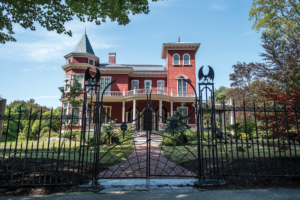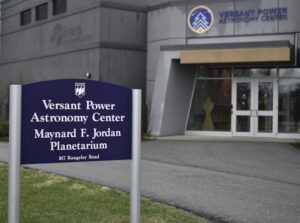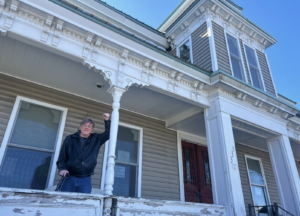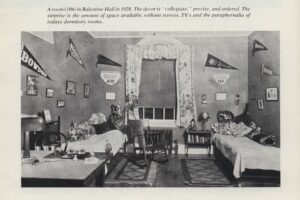On Jan. 14, the Zillman Art Museum (ZAM), known for displaying modern and contemporary art by local artists, announced the opening of five new exhibits. Located at 40 Harlow Street in downtown Bangor, the displays are spread out between the Second Floor Galleries, which are open until April 21 and the Main Floor Galleries, which are open until April 30.
The best part; the ZAM is free to the public. After roaming through the halls, looking at the varying forms of artistic expression, one can’t help but feel inspired and drawn into the mysteries and wonders of the collections after visiting ZAM. You’ll find yourself physically drawn in to look closer at every piece based on curiosity.
Delaney Burns, an intern for ZAM, explained that the exhibits are masterfully put together in an effort to convey a certain theme for months ahead of the exhibits. This exhibition is a must-see for lovers of art.
On the second floor, you will find the exhibition by Alistair O. Finley entitled “The Fractured Narrative.” Finley’s exhibit showcases the Venezuelan photographer’s layered masterpieces. He uses his images’ negatives while in the exposure process, and layers them to create his images. These techniques make the viewer feel a sense of mystery and capture the hustle and bustle of New York City. His works will be on display until April 21.
Also on display until April 21 is Stella Waitzkin’s “Materiality.” Waitzkin is a New York City based sculptor in the abstract impressionist movement. Often using books as her main subject, Waitzkin creates cast resin sculptures, rendering the books completely unreadable but trapping whatever narrative and story the books were trying to tell in the solid block of resin. Waitzkin is known for casting and putting anything—even a deceased bird—into her sculptures, giving the objects a sense of frozen, uncomfortable nostalgia as if they have been stuck in place for centuries. Almost appearing like fossils, the cast objects feel frozen in time.
The third new exhibit on display is “Against the Grain: Woodcuts from the Collection,” by Albrecht Dürer. Woodcutting is the oldest form of printmaking, with the exhibit displaying woodcuts from different centuries and the diversity in the craft. The oldest work on display in the collection is from 1496.
Woodcutting is incredibly difficult. The artist carves out the wood plank that will be used as the stamp, making whatever they carve out blank since they won’t get ink on them because they are not the closest surface for the ink to lay on. The stamp is then firmly pressed or rolled onto a sheet of paper, leaving behind a print of ink. The exhibit shows the diversity of the craft, with modern, abstract and even classic prints included in the exhibit. The diversity of printmaking is what makes it so appealing to so many artists, as well as the technical difficulty accompanying it.
“Deborah Dancy: Circling Time” is the fourth exhibit on display at the ZAM. Rooted in abstract expressionism, Dancy’s works utilizes monochromatic palettes with pops of color to attract the attention of the viewer. She uses a form of “inventive biomorphic abstraction” to evoke emotion, especially the feeling of freedom. She uses an additive and subtractive process when creating her paintings. She paints and creates until she feels she has lost balance in the painting, where she will then scrape off or paint over the unbalanced part.
“I want someone to embrace the different, the difficult, the frightening—even the ugly—in a culture that is vastly different from their own,” Dancy said.
The fifth and final new exhibit is “Valley Low” by Jen Wink Hays. Her paintings use hints of bright colors, such as lime green and fluorescent pink-orange, to create joy and fun when the viewer looks at her work. She marries the natural with the unnatural, where her paintings have a strict set of boundaries when it comes to the edges, but there are none when it comes to the interpretations of the works. They evoke a sense of joy that even Hays describes as “undeniable.”
Her paintings are more psychologically complex than they appear. Her layers are incredibly controlled, and she also uses an additive and subtractive process to achieve balance in her paintings. Even though her paintings come in multiple different shapes and sizes, she does not stray away from showing her ability and keenness to work in different ways. All of her paintings feel vibrant and energetic, yet psychologically complex at the same time. Her works are a perfect balance in all aspects.
The Zillman Art Museum is open Tuesday through Saturday from 10 a.m. to 5 p.m. Admission into ZAM is free to the public.
